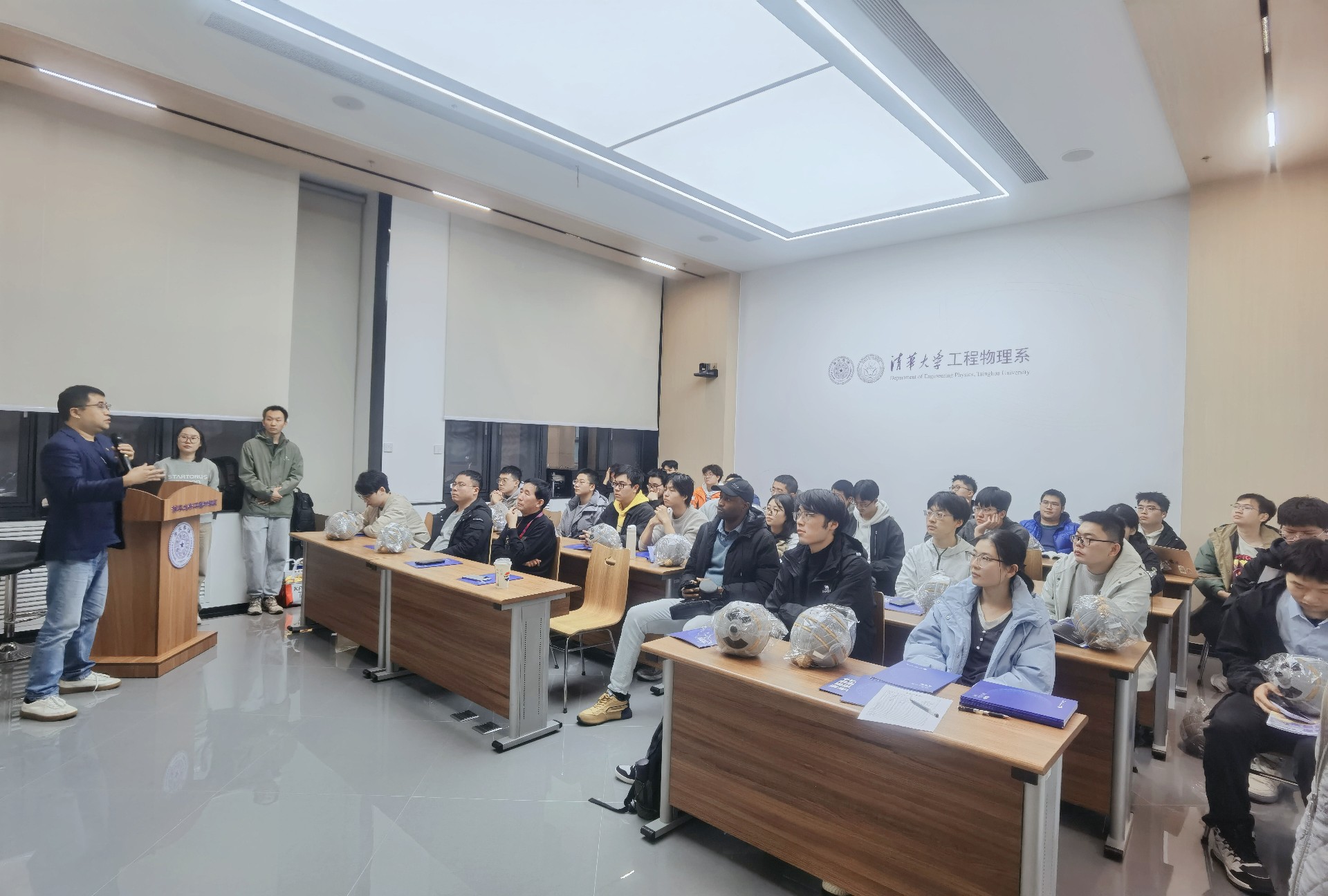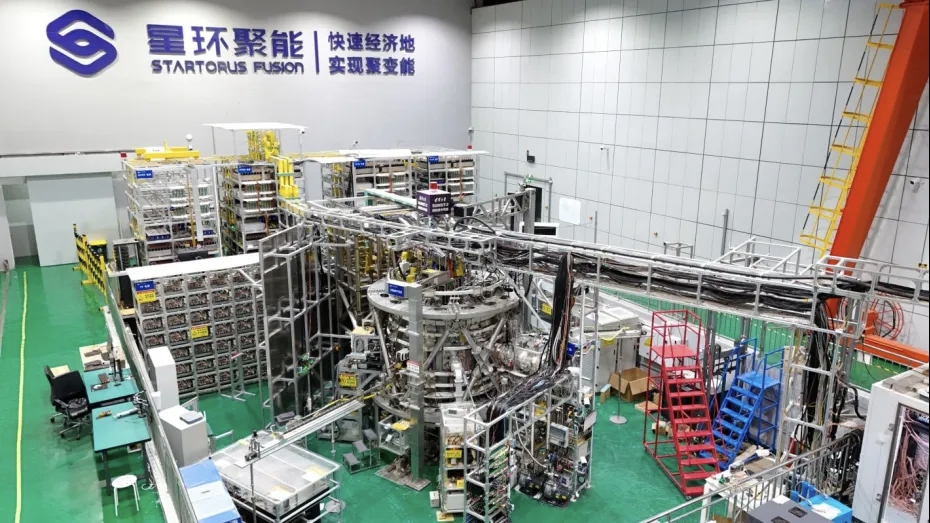Tokamak Energy Ltd, a British company, recently published an article in the journal Physics of Plasmas, aiming to demonstrate that spherical tokamak (ST) devices with high-temperature superconducting (HTS) magnets can provide the fastest and least risky path to developing commercial nuclear fusion energy. The company also suggests that leveraging public-private partnerships could significantly advance this process.Tokamak Energy's ST40 compact, high field ST has proven ex-ceptional performance, with plasma ion temperatures over 100 × 106℃ (above 8keV ) and a record triple product for any private company (nTτE∼ 1019keVs/m3),HTS magnets can routinely achieve over 24 T.Meanwhile Tokamak Energy already selected for the U.S. Department of Energy milestone program and well-positioned to participate in the U.K. Government Spherical Tokamak for Energy Production program.
As described in the Introduction, the spherical tokamak is a promising approach to achieving fusion power
To achieve practical fusion power, a tokamak reactor must be designed and built to maintain stable plasma for a long period of time while also withstanding the high temperatures and radiation produced by the fusion reactions. The spherical tokamak design has several advantages in this regard,including a more compact size and improved plasma stability.
The ST concept allows a significant reduction in development costs and timescales of construction of the intermedium devices and allows the use of advanced technologies has already been confirmed by the short timescale of the construction of ST40 and by achieving the desired fusion relevant plasma temperatures.Advances in high temperature superconductor (HTS) technology allow a significant increase in the toroidal field(Bt ), which we now know will increase energy confinement times and performance in STs, as already demonstrated on ST40.The combination of the high β (ratio of the plasma pressure to mag-netic pressure) that has been achieved in STs and the high toroidal field (Bt) that can be produced by the HTS toroidal field magnets opens a path to lowervolume fusion reactors, as the fusion power is proportional to β2Bt4 V.
Experiments on the medium size spherical tokamaks MAST and NSTX have confirmed a much stronger dependence of the plasma confinement time on B t in STs compared with conventional aspect ratio tokamaks. ST40 demonstrated improvements in performance at Bt > 1T T in ohmic heated discharges and ion temperatures close to 10keV in neutral beam heated hot ion mode discharges.Furthermore, we know that the fraction of the plasma current (bootstrap current) can be very high, approaching 100%, in an ST.(Bootstrap is the self-driven current due to high plasma pressure gradients that are more easily achieved in STs.) This is vitally important as it dramatically reduces the need for the external current drive, which is both costly and inefficient with high energy consumption. Gryaznevich and Chuyanov showed that high beta and high bootstrap current could be achieved simultaneously in an ST and proposed the idea of modular fusion power plants based on comparatively small size STs.
Overall, the spherical tokamak path to fusion power holds great promise for providing a safe, clean, and virtually limitless source of clean,carbon-free energy for humanity’s future needs.
Commercial Fusion Companies Contribute to the Development of Fusion Energy
Over the last few years, it has become clear that privately funded companies can make a decisive contribution to the development of fusion power. This development was anticipated by Clery in an article in EuroFusion News in December 2014 entitled ”Does fusion research lack diversity?”.He made the point that ”The energy and initiative of the private companies could give fusion a much-needed shot in the arm, and for them to take the next step toward viability they will need much more money and could use support
Private companies can bring fresh ideas and approaches to the development of fusion technology, helping to overcome technical and economic barriers that may have previously hindered progress.
Private companies can collaborate with academic and government research institutions to leverage their expertise and resources.Such partnerships can help to accelerate the pace of research and development and foster knowledge exchange.
Private companies can help accelerate the commercialization of fusion technology by investing in the development of the technology and then in the construction of fusion power plants and developing and marketing the technology needed to support them.
Private companies can take a market-driven approach to the development of fusion energy, focusing on the commercial needs of customers and end-users. This can help to ensure that the technology is developed in a way that is cost-effective and efficient-and is designed to meet the needs of the energy market and energy users.
Overall, private companies have the potential to accelerate the development of fusion energy . Their investment, innovation, and market-driven approach can help to bring this promising technology to fruition in a faster and more effective way than is possible otherwise.
HTS ADVANCE THE DEVELOPMENT OF COMMERCIAL FUSION POWER
Hightemperature superconductors (HTS) have the potential to significantly advance the development of commercial fusion power. We note that they have been developed rapidly by private companies, notably Tokamak Energy and Commonwealth Fusion Systems have both focused on rare-earth barium copper oxide (REBCO) HTS material because of its remarkable property of carrying very high currentdensity at temperatures of 20−30 K and in magnetic fields of 20 T or more.
Superconducting magnets are a crucial component of tokamak fusion reactors, as they generate the magnetic fields needed to confine the plasma without dissipating power in the magnets,except for keeping the magnets cold. REBCO HTS materials have the proven potential to produce stronger magnetic fields than conventional,low temperature superconductors. In fact, HTS magnets can deliver about twice the magnetic field strength of conventional, low temperature superconductors-and they can do so in a compact system requiring much less space. This enables the development of more compact and efficient tokamaks.
As REBCO HTS superconductors can operate at much higher temperatures than conventional low temperature superconductors, up to 93 K (but optimal at 20−30 K ), rather than 4 K,which is required for LTS, the energy (and financial) cost of cooling is hugely reduced. In addition,HTS magnets in the center column of the ST need not be totally protected from any heat load related to the neutron flux, as is the case with LTS magnets. It is possible to deal with kW scale heat loads at temperatures of 20-30 K, which means that the thickness of the neutron and secondary gamma shielding can be reduced compared to the LTS magnets. This will also significantly reduce the costs of constructing and operating ST fusion reactors.
Overall, REBCO HTS superconductors have the potential to significantly improve the performance and reduce the costs of tokamak fusion reactors, which will help to accelerate the development of commercial fusion power.
The performance advantages of a spherical tokamak
There are many plasma physics devices that are candidates for a fusion reactor. The most mature is the conventional tokamak, but this has known constraints of efficiency (low beta) and engineering challenges.
ST40 was planned to be the cheapest, quickest way to achieve the plasma ion temperature of∼ 10keV, and a triple product of density, temperature, and energy confinement time, in the 1019keVsm−3 range, which, if DT is used, will satisfy or be close to the ignition criteria according to Ref. 19 and Fig. 2.
The ST40 performance point is shown inFig. 2, where the triple product is plotted vs plasma temperature for tokamaks, stellarators, other magnetic fusion devices, and inertial fusion devices. ST40 has a higher plasma temperature and a similar triple product compared to many larger devices and shows performance well above that achieved in devices designed, financed, and built by other private fusion companies.
fusion reactions have a steep dependence on the temperature. Here, all the main fusion reaction cross sections are plotted vs the ion temperature. The operation space for ST40 is shown (red box) in comparison with that for other STs (lower blue box). Although ST40 operates without tritium fueling, high temperatures boost the secondary D-D reaction that produces tritium (1), and at ∼ 10keV temperatures, the cross-section of D-T reaction is high enough to contribute to the fusion production, upper blue box,
D + T ⇒ α(3.5MeV) + n(14.1MeV)
D + D(50%) ⇒ 3He(0.82MeV) + n(2.45MeV)
D + D(50%) ⇒ T(1.01MeV) + p(3.02MeV)
Government and primary companies jointly promote the development of fusion energy."
The optimum path forward for the development of fusion energy is now seen to be through some form of public-private partnership to combine the best attributes of the public and private sectors as innovation in private companies and research in government laboratories differ in several ways.
Primary companies
1.The primary goal of innovation in private companies is typically to create new products, services, or intellectual property rights that can be sold in the market and generate revenue.
2.Private companies typically rely on funding from investors and customers to support their innovation efforts. They may also access government grants or loans.
3.Private companies are often more agile and can move faster.They can make decisions and pivot quickly to take advantage of emerging technological developments and market opportunities.
4.Private companies have a strong incentive to protect their intellectual property and may hold
patents or trade secrets to maintain a competitive advantage.
5.Private companies may collaborate with other companies, universities, or research institutions to develop new technologies and bring them to market.
Govermant:
1.Government laboratories often focuses on advancing scientific knowledge that will bring broader societal benefits and create, develop, and sustain expertise.
2.Government laboratories, on the other hand, are often funded by taxpayer money and may have more stable and long-term funding sources.
3.Government laboratories may be subject to longer bureaucratic processes, which can slow down the
pace of research and development.
4.Government laboratories, on the other hand, may prioritize sharing their research findings with the scientific community and making them available to the public, and for this, the number of publications is often very important.
5.Government laboratories may also collaborate with other organizations but may prioritize collaborations that align with their mission and goals
Overall, private companies and government laboratories play different but complementary roles in advancing scientific knowledge and developing new technologies. While private companies focus on commercialization and profitability, government laboratories have a broader mandate to address societal challenges and advance scientific knowledge.
The UK publicprivate partnership
In the UK, the Spherical Tokamak for Energy Production (STEP) program is a form of publicprivate partnership with the government as the customer, the spherical tokamak as the selected plasma confinement device, and high temperature superconductors as the chosen material for the magnets. It is, thus, closely aligned with the technology developed by the private companies, in particular Tokamak Energy.The government’s focus on the spherical tokamak design and the establishment of the STEP program demonstrate its commitment to developing a commercial Fusion power plant based on this innovative technology.
The U.S. publicprivate partnership
The goverment as a co-founder but with the choice of devices left deliberately to private companies. This program is particularly exciting as it is modeled on the COTS program used by NASA almost 20 years ago to bring forward a new generation of space launchers. The COTS program was hugely successful as it directly supported Space-X and stimulated private investment and competition. The result has been a 100 -fold reduction in the cost per kilogram of payload for space launches in 20 years.The DOE has several programs and initiatives to support the development of commercial fusion energy.The DOE milestone program has now selected eight companies, including Tokamak Energy, for the first 18 months.Overall,the DOE supports the development of commercial fusion energy through a combination of fundamental research, publicprivate partnerships, and support for private companies and entrepreneurs.
The U.S. government has funded the collaboration on ST40 for quite a few years.It was realized via participation of PPPL scientists in ST40 experiments, assistance with diagnostics and data analysis and resulted in several joint publications and presentations at international conferences. In this case, the public partner (PPPL) benefited from advancing ST physics by using experimental results from ST40, and the private partner(TE.Ltd) was able to use the results of the data analysis to advance and optimize the operations of ST40.Tokamak Energy says "We would be delighted to extend the existing public-private partnership projects and to discuss longer term options for collaborative R&D on ST40 and beyond."





